Rosales is commonly called the rose order that contains dicotyledonous types of flowers, divided into 9 families, 261 genera, and over 7, 700 species. In addition, Rosales is categorized in the Rosid I group of core eudicots and is related to other orders such as legumes because of its nitrogen fixation[1] ability.
Rosales include families that previously belonged to former orders Urticales and Rhamnales, which adds to the diversity of Rosales.
The order produces some of the most popular ornamental and edible fruits in the world’s temperate regions. Apart from a wide variety of roses, other products of Rosales include apples, cherries, peaches, plums, pears, raspberries, strawberries, and figs.
Table of Contents
Rosales Pronunciation
Rosales Distribution
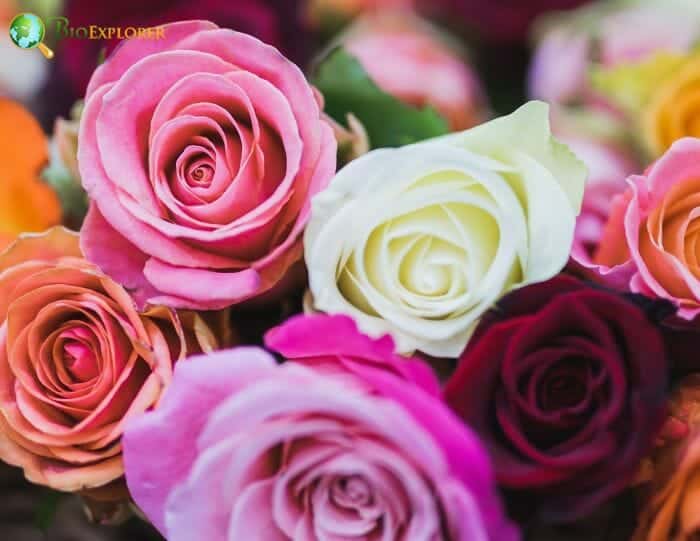
Rosales has a worldwide distribution, with species growing abundantly in different parts of the world. They can be found in regions such as the Arctic, tropics, mountains, forests, grasslands, and deserts.
Some species of this order are common[2] and dominant members of various ecological communities. However, the distribution patterns of different families and genera of the order vary based on geography or climate.
- Rosaceae: Comprising mainly of woody plants, shrubs, or medium-sized trees, Rosaceae is primarily distributed in the north temperate zone and can be found in many types of habitatsSome of these plants bear thorns, spines, or prickles to ward off herbivores.
- Moraceae: It comprises monoeciousWhat is monoecious? About plants, individuals of which bear both staminate and pistillate flowers, but not necessarily perfect flowers. or dioeciousWhat is dioecious?About plants, individuals of which bear either staminate or pistillate flowers, but not both. herbs, shrubs, trees, and lianas, usually with laticifers having a milky latex. They have small, unisexual flowers that are actinomorphic, epigynous, or hypogynous. The Moraceae are distributed worldwide in both tropical and temperate regions.
- Ulmaceae: These flowering plants grow in temperate Eurasia and Northern America, tropical Africa, America, and Southeast Asia. Products of economic significance include timber, fiber, fodder, medicinal plants, and ornamental.
- Urticaceae (including Cecropiaceae) flowering plants are commonly called the Nettle family and are distributed worldwide in temperate and tropical regions. Economic significance includes species such as Boehmeria nivera used as fiber plants, Pilea sppn and Soleirolia soleirolii used as cultivated ornamentals, and some species producing leaf vegetable crops. In addition, the family includes the fast-growing Cecropia spp., an ecologically significant pioneer tree found in the Neotropics.
- Cannabaceae: These are commonly called the Hemp family and have members distributed almost worldwide, many of which grow across the temperate parts of the Northern Hemisphere.
- Rhamnaceae: These flower species are commonly called the buckthorn family, consisting of shrubs and trees distributed worldwide that are primarily concentrated in the tropics and warm temperate regions.
- Elaeagnaceae:These flowering plants are also called the oleaster family, contain shrubs and trees mainly found in the warm tropics and north temperate region extending into Malesia and Australia.
- Barbeyaceae: This monotypic family has only one genus and one specie, B. oleoides. B. Oleoidesis a small tree that grows in northeast Africa and Arabia.
- Dirachmaceae: A monogeneric family comprising two rare and endangered species, D. socotranafound in Socotra and D. somalensis in Central Somalia.
Rosales Characteristics
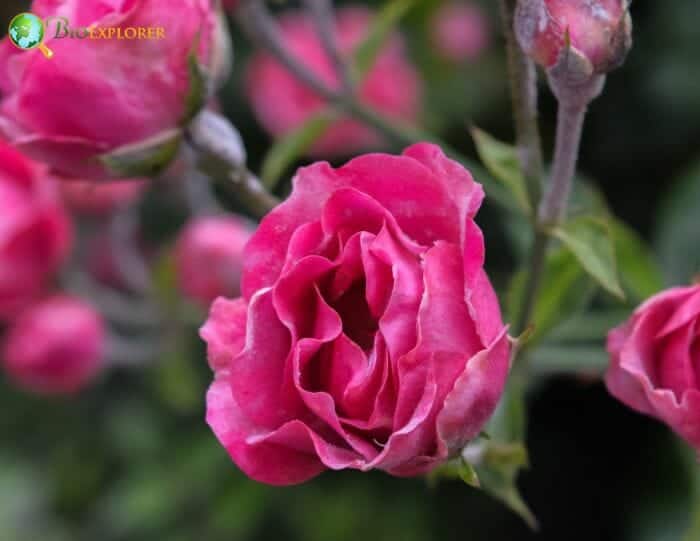
The species in this order comprise various trees, shrubs, vines, and herbs. Rosales has the following standard features:
- Simple leaves with stipules.
- Bisexual, usually perfect flowers have five sepals and petals, several stamens, and an inferior ovary.
- Flat or cup-shaped flowers that show valvate arrangement.
- Stigma is dry.
- Abundant pollen and nectar are produced to attract insects.
- Sepals that are fused at the base.
- Plants often have thorns or hairs.
- Fruits may be achenes, drupes, or aggregates.
Rosaceae Characteristics (Rose Family)
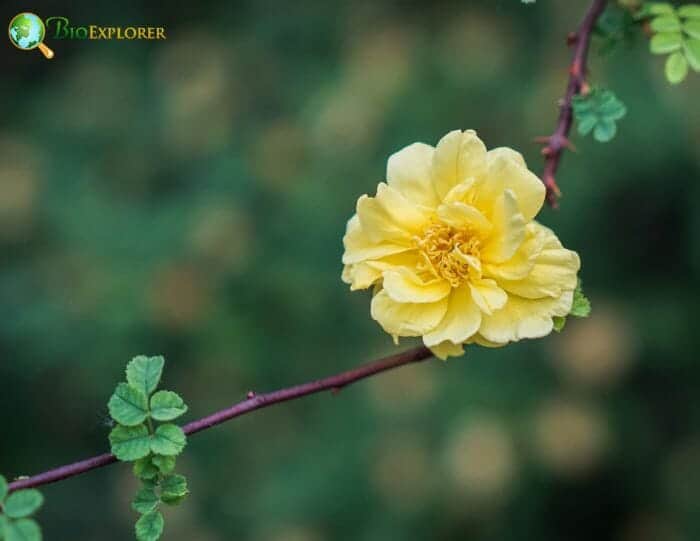
The Rosaceae consists of herbs, shrubs, trees climbing, rhizomatousWhat is rhizomatous?Bearing rhizomes. The rhizome is an underground stem, with nodes and short to elongate internodes., or thorny. Some standard features of Rosaceae are:
- Simple or stellate plant hairs that may be present with prickles.
- Small to large flowers may be white, pink, yellow, lavender, orange, or red. A few members have blue flowers, although that is rare.
- The flowers are usually flat or shallowly cup-shaped and produce nectar.
- The flowers are pollinated by various insects.
- The Rosaceae are distinctive in having the following features:
- Mostly stipulate leaves (often adnate to petiole).
- A pentamerousWhat is pentamerous?Having parts in fives or multiples of five. flower that is actinomorphic and has a hypanthium, several stamens. The gynoecial fusion, ovary position, and fruit type vary.
URTICALEAN ROSIDS
Uritcalean rosids are a monophyletic group present within Rosales that consists of four families previously listed in another order called Urticales.
This group contains small, unisexual flowers that are wind-pollinated. The Uriticalean rosids consist of Moraceae, Ulmaceae, Urticaceae, and Cannabaceae.
Let’s look closely at each of the families.
Moraceae Characteristics (Mulberry family)
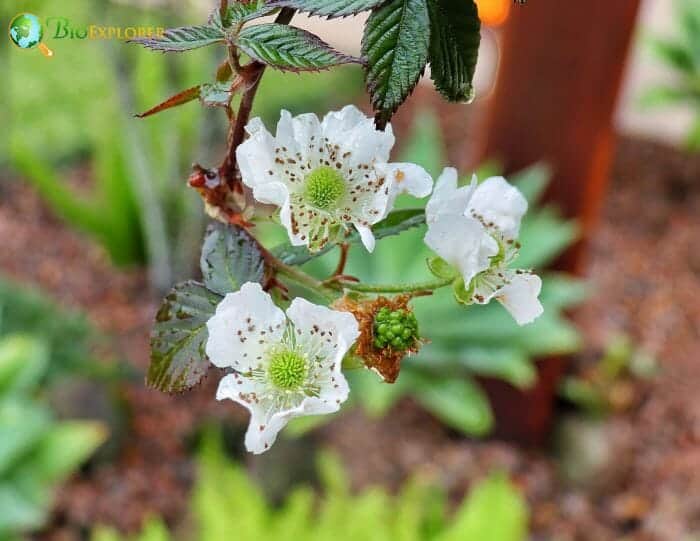
The Moraceae contain monoecious or dioecious trees, shrubs, lianas, or herbs that are distinctive in having the following features:
- Have a milky latex.
- Simple leaves with stipules.
- Unisexual flowers of which the female flowers usually have a 2-carpellate (2-styled) pistil and a single ovule that is apical or subapical.
- The fruit comprises multiple achenes with an enlarged compound receptacle or syconium in some taxa.
Ulmaceae Characteristics (Elm family)
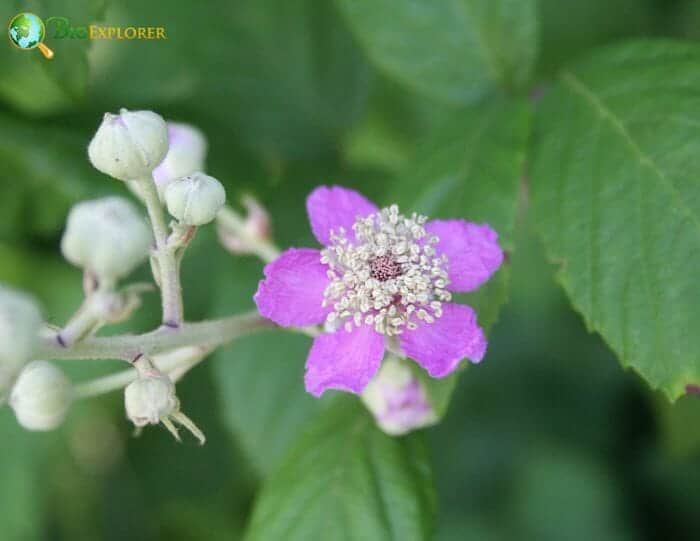
The Ulmaceae are mostly trees that have the following distinctive features:
- Simple leaves primarily distichousWhat is distichous?Two-ranked, with leaves or flowers in two opposite rows in the same plane., serrated, and oblique have secondary veins that terminate at the teeth.
- Small, unisexual, or bisexual flowers are small that are wind-pollinated.
- The ovary is superior, 2-3-loculed having 1 pendulous ovule per locule.
- The fruit is dry, mostly a flattened samara.
Urticaceae Characteristics (Nettle family)
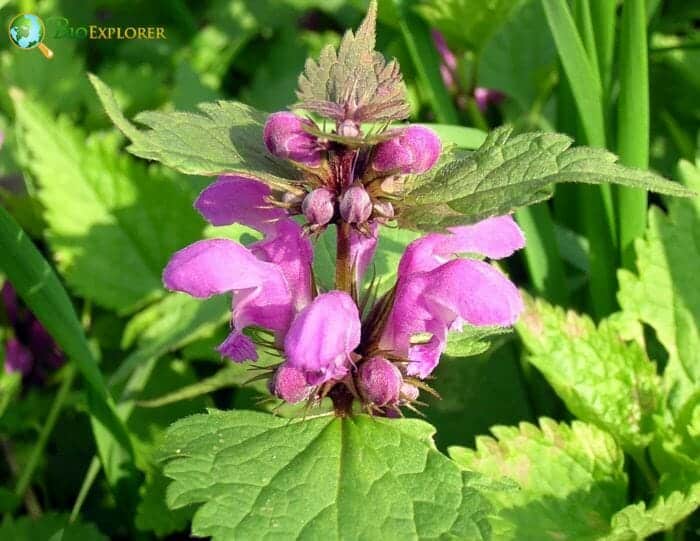
The Urticaceae are monoecious or dioecious herbs, shrubs, trees, or lianas that are distinctive having the following characteristics:
- Calcium carbonate cystoliths are present.
- Some taxa have stinging trichomes.
- Tiny flowers are wind-pollinated and have a uniseriate perianth (rarely absent).
- As seen in several taxa, inflexed, pollen-catapulting filaments, the male flowers have straight.
- The female flowers have a unilocular, usually uni carpellate (pseudomonomerous) ovary that contains a single, basal, orthotropous ovule.
- The fruit is an achene, drupe, or nut, usually attached to an accrescent perianth.
Cannabaceae Characteristics (Hemp family)
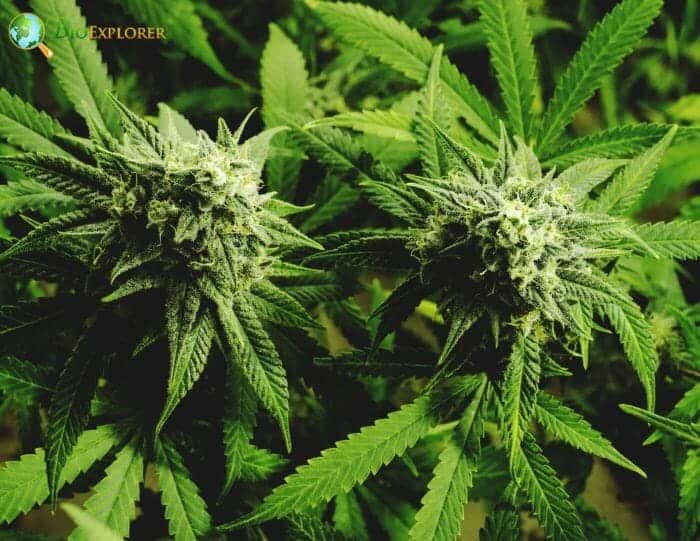
This family includes erect or climbing plants that may be trees, lianas(woody vines), or herbaceous plants having the following features:
- The leaves are arranged oppositely in spirals, mostly compound or palmately lobed.
- Most of the plants are dioecious, such that the members are male or female.
- The flowers do not have petals.
- The fruits are dry, one-seeded achenes or samaras.
Rhamnaceae Characteristics (Buckthorn family)
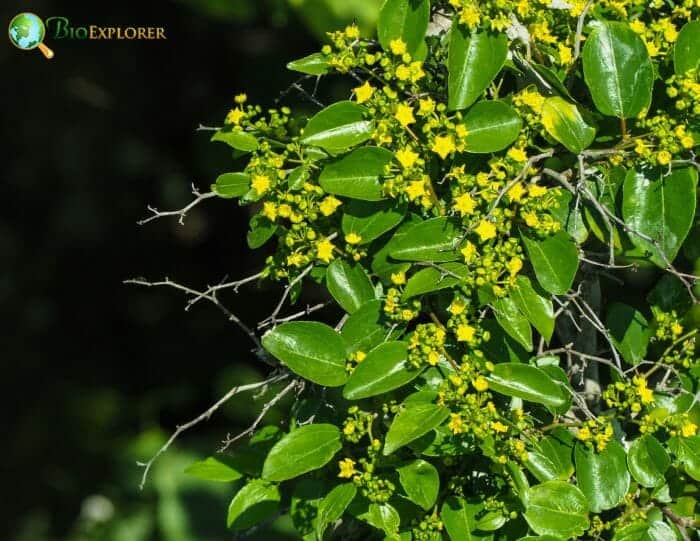
Members of this family have the following features:
- Woodiness.
- Stamens (male) alternating with sepals (opposite petals, when present).
- A tissue is present in the shape of a disk under or around the ovary.
- The bases of flower parts join to form a cup (hypanthium) that surrounds the ovary.
- Simple leaves and well-developed sepals.
- Stamens are present opposite to petals.
- A prominent hypanthium is present.
- A two- to five-chambered ovary exists in which ovules arise basally.
- The fruits are mostly berrylike (having a hard inner layer) or dry capsules with shed seeds.
- The family is well adapted to dry climates such that leaves are small and crowded, branches are short, and thorns are present. Plants are usually thorny shrubs with an intricate branching habit.
Elaeagnaceae Characteristics (Oleaster family)
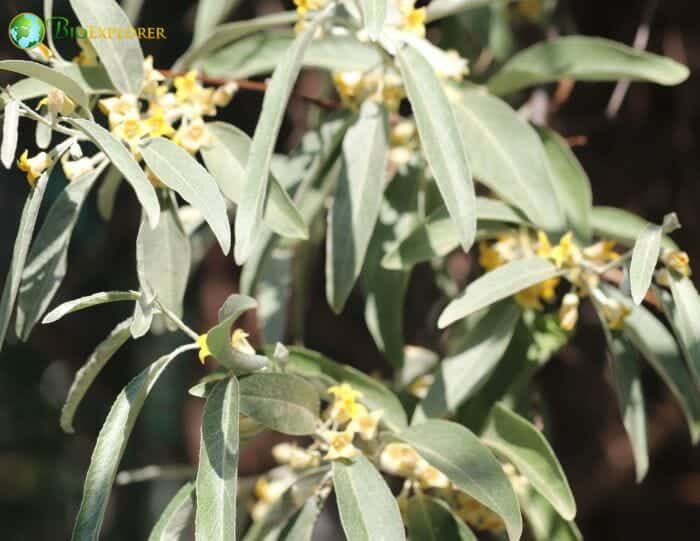
The plants have the following features:
- A covering of small, distinctive scales that produce a characteristic silvery or rusty-colored sheen.
- Root nodules contain nitrogen-fixing bacteria usually associated with the roots.
- Radially symmetrical flowers that are bisexual or separately male and female.
- Flowers do not have petals, but four sepals’ tubular structure is present.
- The stamens present may be the same or double the number of sepals.
- The pistil is present above the attachment point of the other flower parts. It contains one carpel having a single ovule.
Rosales Example Species

- Cannabis sativa – a cultural and economic plant belonging to the Cannabaceae family. Cannabis sativa, famously known to produce marijuana, a euphoric and medicinal plant, is also used as a bast fiber plant and hemp.
- Holoptelea integrifolia – A versatile medicinal plant.
- Rosa – The genus contains various members that yield garden roses.
- R. rugosa – produces edible rosehip rich in vitamin C and is used to make preserves.
- Malus domestica – The most widely cultivated fruit tree that yields apples.
- Fragaria – The plant that yields strawberries.


























